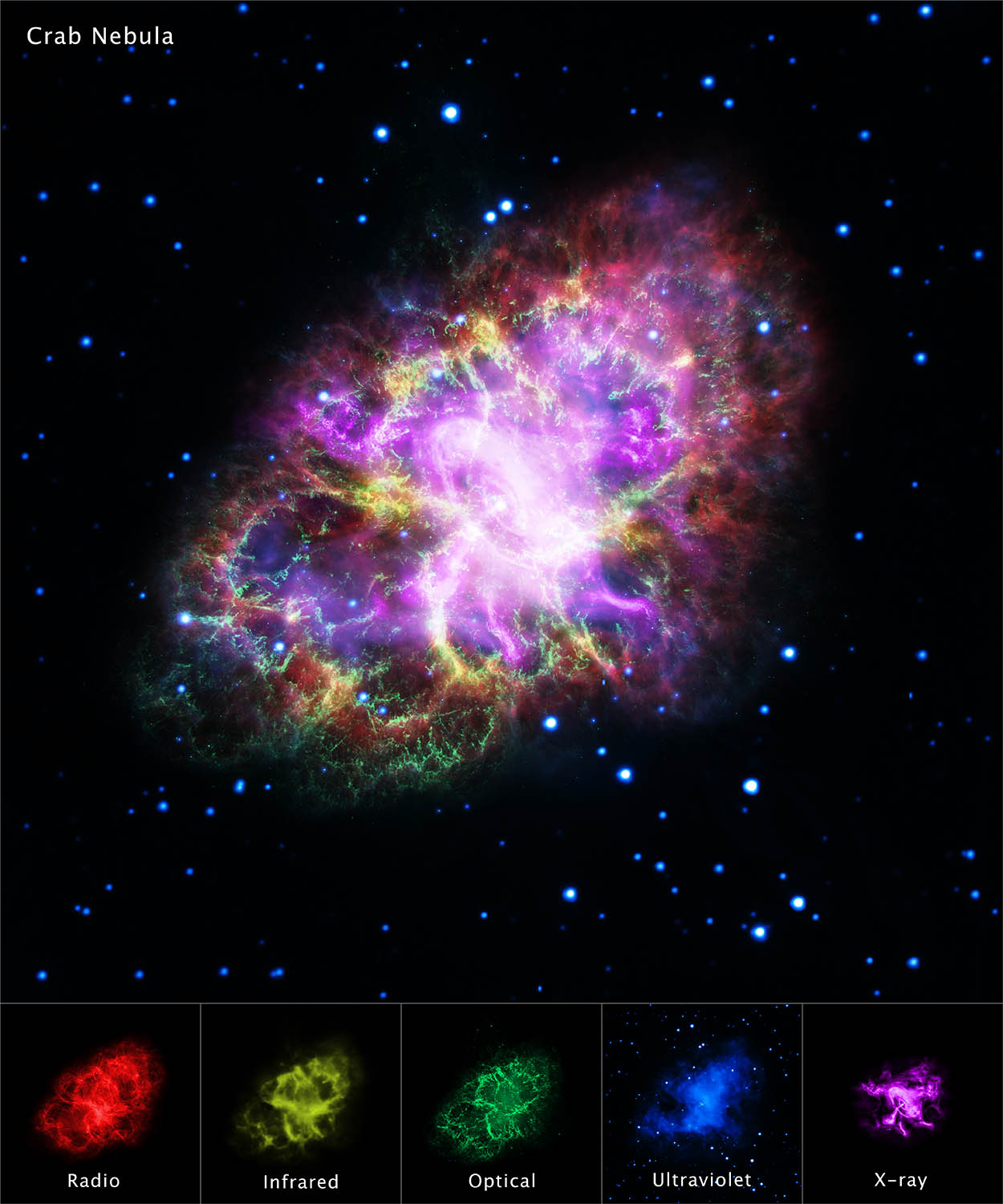NASA | CXC | STScI | HubbleSite | Spitzer | 2017 May 10
Astronomers have produced a highly detailed image of the Crab Nebula, by combining data from telescopes spanning nearly the entire breadth of the electromagnetic spectrum, from radio waves seen by the Karl G. Jansky Very Large Array (VLA) to the powerful X-ray glow as seen by the orbiting Chandra X-ray Observatory. And, in between that range of wavelengths, the Hubble Space Telescope’s crisp visible-light view, and the infrared perspective of the Spitzer Space Telescope.
The Crab Nebula, the result of a bright supernova explosion seen by Chinese and other astronomers in the year 1054, is 6,500 light-years from Earth. At its center is a super-dense neutron star, rotating once every 33 milliseconds, shooting out rotating lighthouse-like beams of radio waves and light -- a pulsar (the bright dot at image center). The nebula’s intricate shape is caused by a complex interplay of the pulsar, a fast-moving wind of particles coming from the pulsar, and material originally ejected by the supernova explosion and by the star itself before the explosion.
This image combines data from five different telescopes: The VLA (radio) in red; Spitzer Space Telescope (infrared) in yellow; Hubble Space Telescope (visible) in green; XMM-Newton (ultraviolet) in blue; and Chandra X-ray Observatory (X-ray) in purple.
The new VLA, Hubble, and Chandra observations all were made at nearly the same time in November of 2012. A team of scientists led by Gloria Dubner of the Institute of Astronomy and Physics (IAFE), the National Council of Scientific Research (CONICET), and the University of Buenos Aires in Argentina then made a thorough analysis of the newly revealed details in a quest to gain new insights into the complex physics of the object. ...
A New Look at the Crab Nebula
National Radio Astronomy Observatory | 2017 May 10
Morphological Properties of the Crab Nebula: A Detailed Multiwavelength Study
Based on New VLA, HST, Chandra and XMM-Newton Images - G. Dubner et al
- Astrophysical Journal 840(2):82 (2017 May 10) DOI: 10.3847/1538-4357/aa6983
arXiv.org > astro-ph > arXiv:1704.02968 > 10 Apr 2017
Note: A video comparison of the various wavelengths can be seen here.
Crab on LCD
ESA Hubble Picture of the Week | 2017 May 15
